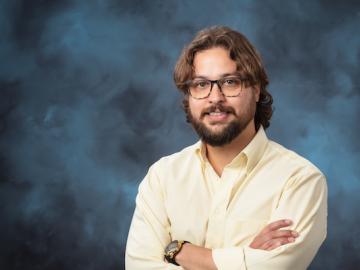
Filter News
Area of Research
- (-) Materials (25)
- (-) National Security (11)
- (-) Neutron Science (16)
- (-) Supercomputing (34)
- Advanced Manufacturing (1)
- Biological Systems (1)
- Biology and Environment (20)
- Computational Biology (1)
- Electricity and Smart Grid (1)
- Energy Science (35)
- Fusion and Fission (3)
- Isotopes (5)
- Materials for Computing (5)
- Nuclear Science and Technology (2)
News Topics
- (-) Artificial Intelligence (27)
- (-) Biomedical (14)
- (-) Grid (6)
- (-) Materials Science (23)
- (-) Transportation (8)
- 3-D Printing/Advanced Manufacturing (8)
- Advanced Reactors (1)
- Big Data (18)
- Bioenergy (9)
- Biology (10)
- Biotechnology (2)
- Buildings (3)
- Chemical Sciences (8)
- Clean Water (3)
- Composites (2)
- Computer Science (53)
- Coronavirus (10)
- Cybersecurity (8)
- Energy Storage (8)
- Environment (24)
- Exascale Computing (16)
- Fossil Energy (1)
- Frontier (17)
- Fusion (2)
- High-Performance Computing (27)
- Hydropower (1)
- Isotopes (7)
- Machine Learning (16)
- Materials (25)
- Mathematics (2)
- Microscopy (7)
- Nanotechnology (10)
- National Security (24)
- Neutron Science (59)
- Nuclear Energy (12)
- Partnerships (4)
- Physics (13)
- Polymers (5)
- Quantum Computing (12)
- Quantum Science (12)
- Security (7)
- Simulation (12)
- Software (1)
- Space Exploration (3)
- Summit (22)
Media Contacts

In human security research, Thomaz Carvalhaes says, there are typically two perspectives: technocentric and human centric. Rather than pick just one for his work, Carvalhaes uses data from both perspectives to understand how technology impacts the lives of people.

It’s a simple premise: To truly improve the health, safety, and security of human beings, you must first understand where those individuals are.

A team of researchers has developed a novel, machine learning–based technique to explore and identify relationships among medical concepts using electronic health record data across multiple healthcare providers.

A study led by researchers at ORNL could help make materials design as customizable as point-and-click.

Unequal access to modern infrastructure is a feature of growing cities, according to a study published this week in the Proceedings of the National Academy of Sciences

A study by researchers at the ORNL takes a fresh look at what could become the first step toward a new generation of solar batteries.

To explore the inner workings of severe acute respiratory syndrome coronavirus 2, or SARS-CoV-2, researchers from ORNL developed a novel technique.

A team of scientists led by the Department of Energy’s Oak Ridge National Laboratory and the Georgia Institute of Technology is using supercomputing and revolutionary deep learning tools to predict the structures and roles of thousands of proteins with unknown functions.

Neuromorphic devices — which emulate the decision-making processes of the human brain — show great promise for solving pressing scientific problems, but building physical systems to realize this potential presents researchers with a significant

A team led by the U.S. Department of Energy’s Oak Ridge National Laboratory demonstrated the viability of a “quantum entanglement witness” capable of proving the presence of entanglement between magnetic particles, or spins, in a quantum material.


